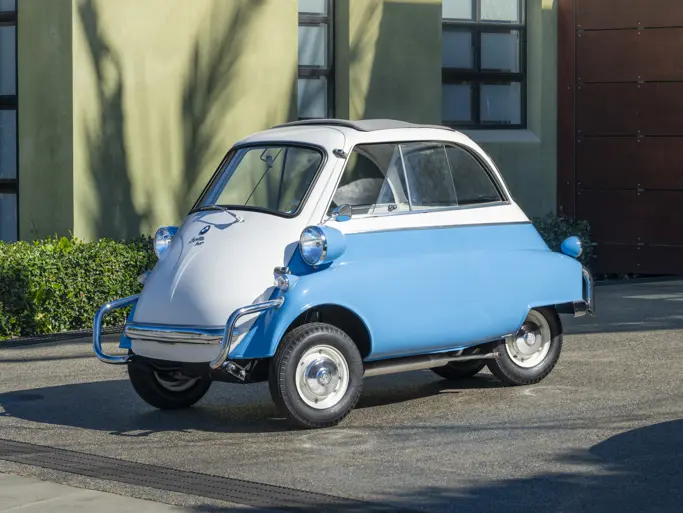
1951 Glasspar G2
{{lr.item.text}}
$15,400 USD | Sold
{{bidding.lot.reserveStatusFormatted}}
- 302-cid Ford V-8 engine
- Four-speed manual transmission
- Original & "shelved for 40 years" Glasspar body
- Modern Chrysler chassis
- Rollbar & competition-style seatbelts
- Radio
- Alloy wheels with spinner caps
- Fiberglass forerunner of the Corvette
- Glasspar built respected boats in period
- Similarly bodied car on cover of January 1953 Road & Track
The Glasspar boat company was started in 1947 when Bill Tritt began building small fiberglass boat hulls in his Costa Mesa, California fiberglass shop. By the mid-1950s, Glasspar was producing 15 to 20 percent of all fiberglass boats sold in the U.S. By 1960, branch factories were operating in Nashville, Tennessee, Petersburg, Virginia, Olympia, Washington, and Sherman, Texas.
Although the car body and assembly manufacturing business lasted only seven years, it had a huge impact on the U.S. auto industry and is said to have been a major influence in the Chevrolet introduction of the fiberglass Corvette in 1953. The Glasspar G2 was the first production fiberglass-bodied car to be built in America when introduced. In June 2000, in recognition of their pioneering efforts, a Glasspar G2 was placed on the exhibition floor of the Smithsonian National Museum of American History in Washington D.C.
It is reported that this Glasspar was sold as a body only, like many of the units sold. It was “shelved” on a wall of a shed for the next 40 years. It was later assembled with a late-model Chrysler frame and a Ford V-8 engine (302-cid) and is fitted with a four-speed manual transmission. The original and stock configured Glasspar has a 3/16-in thick body with a molded cockpit. The cost of the body when new is stated as being $200. A wide variety of powerplants could be chosen in period that would fit the car – from Ford, Chrysler, Lincoln, Cadillac and more. According to historians, approximately 100 G2’s were built.
The owner notes that there are no doors on this car, and he speculates that it may have been ready to be purposed as a racecar. A similar blue Glasspar G2 on the cover of the January 1953 edition of Road & Track magazine is setup for road use and is pictured hurtling down the road in a similar no-door configuration, so the racecar aspect is theory, yet plausible.
The story continues that a Glasspar body was presented to Harley Earl, Chief Stylist of GM for evaluation. Around one year later, GM produced a fiberglass body for their new Corvette. The Corvette method of laying up the fiberglass differed from the Glasspar method that was acquired from boat building. The Corvette used a faster and less ridged molding process rather than the stronger hand-laminated process used by Glasspar. This method is why Glasspar bodies in use today are generally found looking “as good as new.”
A comfortable interior accents the sleekly-styled bodywork and is fitted with a rollbar, foglights, competition-style seatbelts, wraparound windshield, alloy wheels with spinners, separating cockpit console, woodgrain dashboard, blackwall tires and leather-wrapped steering wheel.
The owner conveys that if it is preferred to have a more period-correct engine that this is an “easy process.” He also lets it be known that the car is “certainly a blast to drive” as presented.


 | Auburn, Indiana
| Auburn, Indiana


